�
免费在线版本
(非印刷免费在线版)
了解本书更多信息请登录本书的官方网站
InfoQ 中文站出品
本书由 InfoQ 中文站免费发放,如果您从其他渠道获取本书,请注册 InfoQ 中文站以支持
作者和出版商,并免费下载更多 InfoQ 企业软件开发系列图书。
本迷你书主页为
http://www.infoq.com/cn/minibooks/kanban-scrum-minibook-cn
看板和 Scrum──相得益彰
Henrik Kniberg、Mattias Skarin 著
Mary Poppendieck、David Anderson 序
李剑 译
郭晓刚 审校
�
© 2009 C4Media Inc.
All rights reserved.
C4Media, Publisher of InfoQ.com.
This book is part of the InfoQ Enterprise Software Development series of books.
For information or ordering of this or other InfoQ books, please contact books@c4media.com.
No part of this publication may be reproduced, stored in a retrieval system or transmitted in any
form or by any means, electronic, mechanical, photocopying, recoding, scanning or otherwise except
as permitted under Sections 107 or 108 of the 1976 United States Copyright Act, without either the
prior written permission of the Publisher.
Designations used by companies to distinguish their products are often claimed as trademarks. In all
instances where C4Media Inc. is aware of a claim, the product names appear in initial Capital or ALL
CAPITAL LETTERS. Readers, however, should contact the appropriate companies for more complete
information regarding trademarks and registration.
Managing Editor: Diana Plesa
Cover art: Bistrian Iosip
Composition: Accurance
Library of Congress Cataloguing-in-Publication Data:
ISBN: 978-0-557-13832-6
Printed in the United States of America
�
目录
序── Mary Poppendieck ..................................................................................................... i
序── David Anderson ........................................................................................................ ii
引子 ................................................................................................................................. v
第一部分──二者对比 .......................................................................................................1
1 究竟什么是 Scrum,什么是看板? .........................................................................2
2 Scrum 和看板有什么关系? .....................................................................................5
3 Scrum 规定了角色 ...................................................................................................9
4 Scrum 规定了固定时长的迭代 ...............................................................................10
5 看板按流程状态限制 WIP, Scrum 按迭代限制 WIP..............................................12
6 二者都是经验主义的 ............................................................................................14
7 Scrum 在迭代内拒绝变化 ......................................................................................19
8 Scrum 板在迭代之间重置 ......................................................................................21
9 Scrum 规定了跨功能团队 ......................................................................................22
10 Scrum 的 backlog 条目必须能跟 Sprint 搭配的上 ...................................................23
11 Scrum 规定了估算和生产率 .................................................................................24
12 二者都允许在多个产品上并行工作 ......................................................................25
13 二者都是既精益又敏捷 ......................................................................................27
14 小小差异 ...........................................................................................................28
15 Scrum 板 vs. 看板图──一个不大不小的例子 ......................................................31
16 小结── Scrum vs.看板 ........................................................................................38
�
第二部分──案例分析 .....................................................................................................40
17 技术支持的现状 .................................................................................................41
18 到底为什么要改变? ..........................................................................................42
19 我们从哪里开始? .............................................................................................43
20 上路 ...................................................................................................................45
21 团队启动 ...........................................................................................................46
22 直面相关干系人 .................................................................................................48
23 做出第一个图 ....................................................................................................49
24 设置第一个 WIP 上限 .........................................................................................52
25 守住 WIP 上限 ....................................................................................................53
26 什么任务能放到看板图上? ...............................................................................54
27 怎样做估算? ....................................................................................................55
28 我们是怎么工作的,具体点? ............................................................................57
29 哪种做计划的方法好呢 ......................................................................................60
30 度量什么呢? ....................................................................................................63
32 忽然一切都不一样了 ..........................................................................................65
32 经验心得 ...........................................................................................................69
结束语 ............................................................................................................................72
作者简介 ........................................................................................................................74
�
�
序── Mary Poppendieck
Henrik Kniberg 的身上有一种稀有的特质,他可以从复杂的问题中剥离掉无关的因素,
提取出最核心的思想,以最清澈最透明的方式讲述出来,让人觉得这些知识竟是前
所未有地简单易懂。Henrik 在这本书里完成了一项壮举。他解释了 Scrum 和看板的
区别,让读者明白它们不过是工具而已,我们所要做的是打造一个完备的工具箱,
彻底弄懂每一项工具的长处和局限,明白什么情况下用什么工具。
在这本书中,你会了解到看板所要解决的问题域、它的强项和弱点、使用时机。你
也会学到很精彩的一课──Scrum,或是你手头任何一款工具的改进时机和方案。
Henrik 在书中讲得很明白,你一开始选用什么工具并不重要,重要的是你要不断改
进它的用法,不断扩充你的工具箱。
Mattias Skarin 写了书的第二部分,他讲述了 Scrum 和看板在真实场景中的应用,把
这本书变得更加精彩纷呈。这两个工具或是单兵突击,或是联合作战,推动着软件
开发过程改进的步伐。书中讲到,世界上没有“最好”的方式;每个人都需要在自己
的场景中思考,找到继续前行的方向。
Mary Poppendieck
i
�
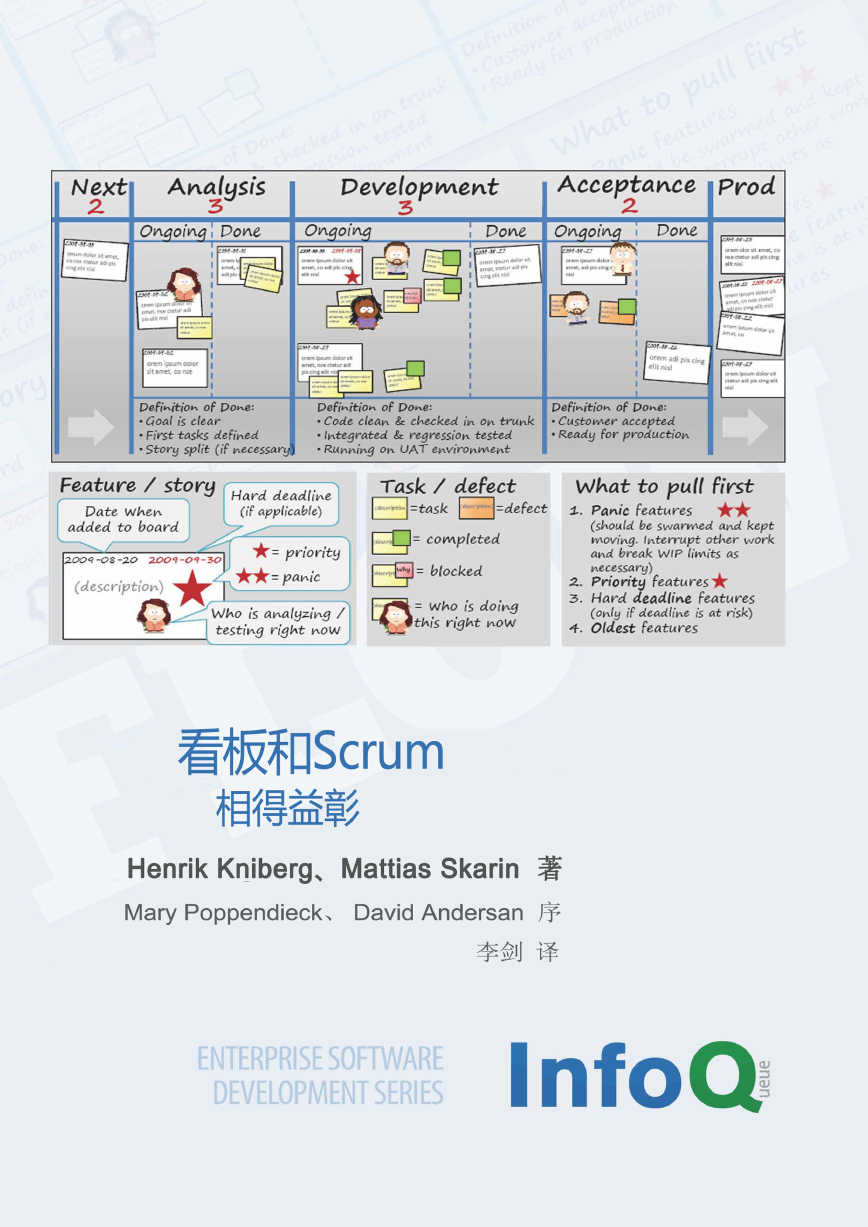
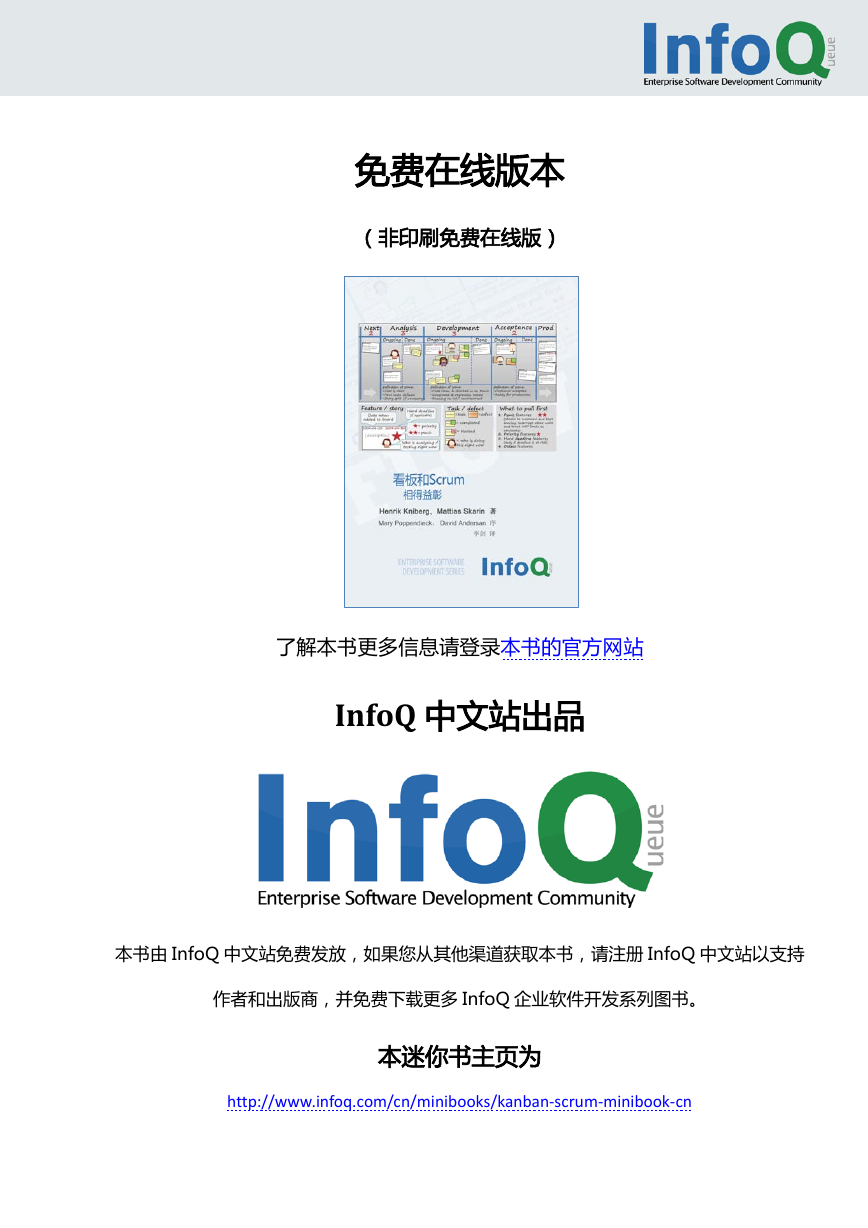
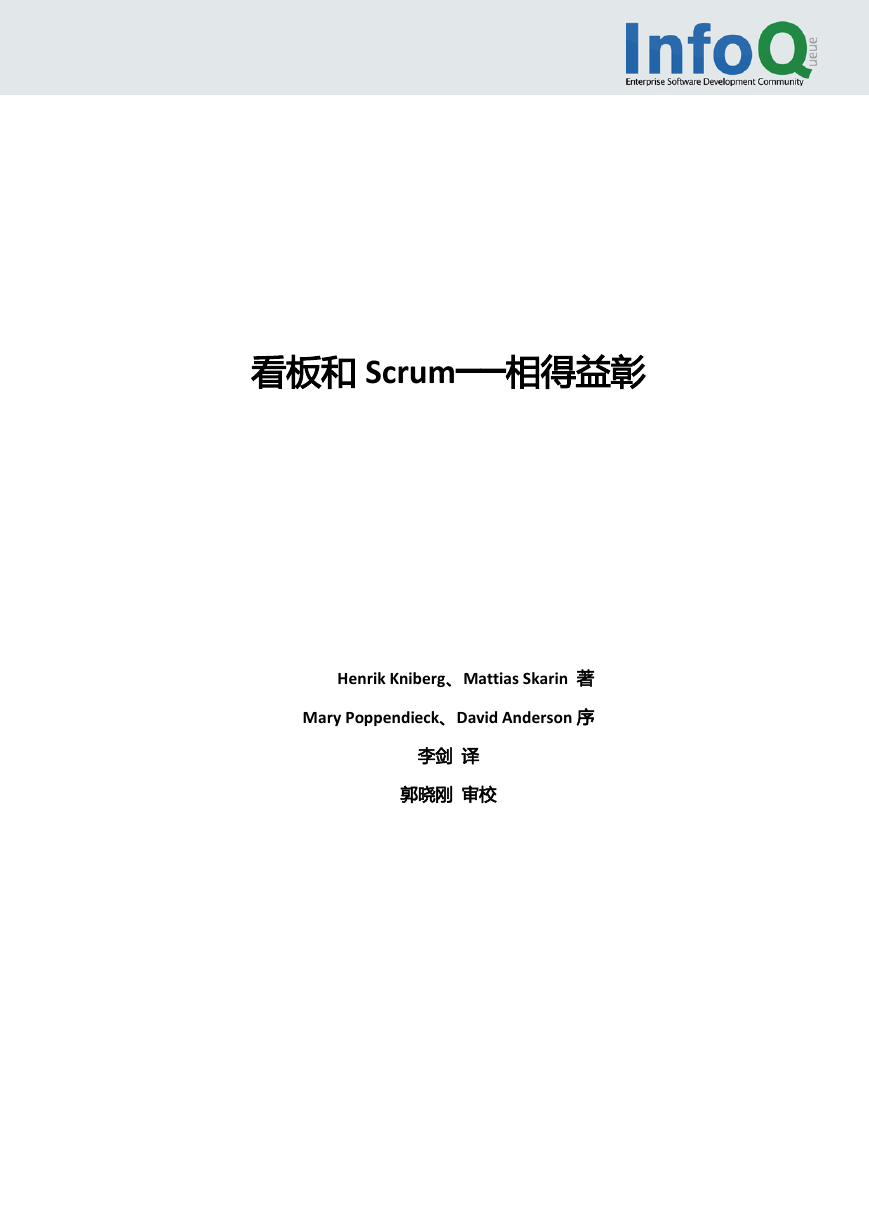
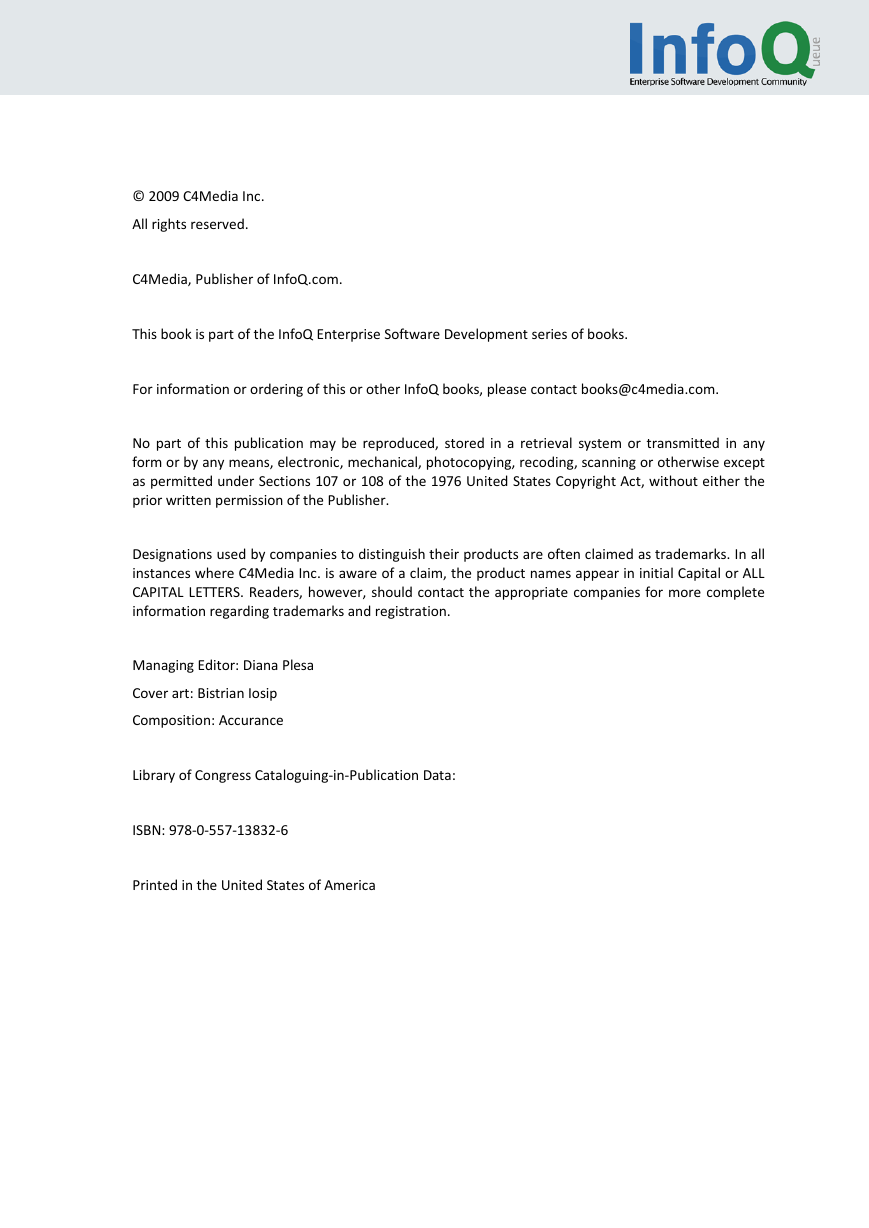

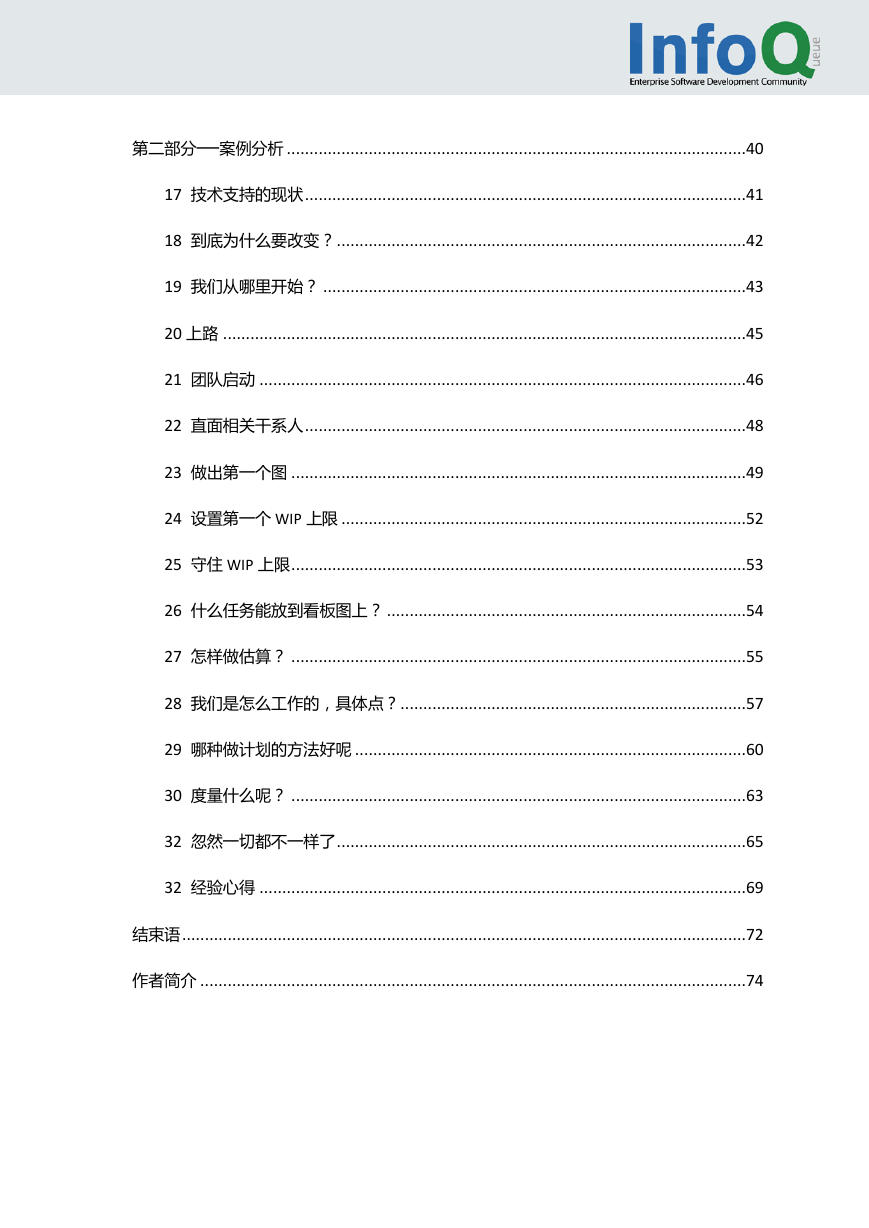
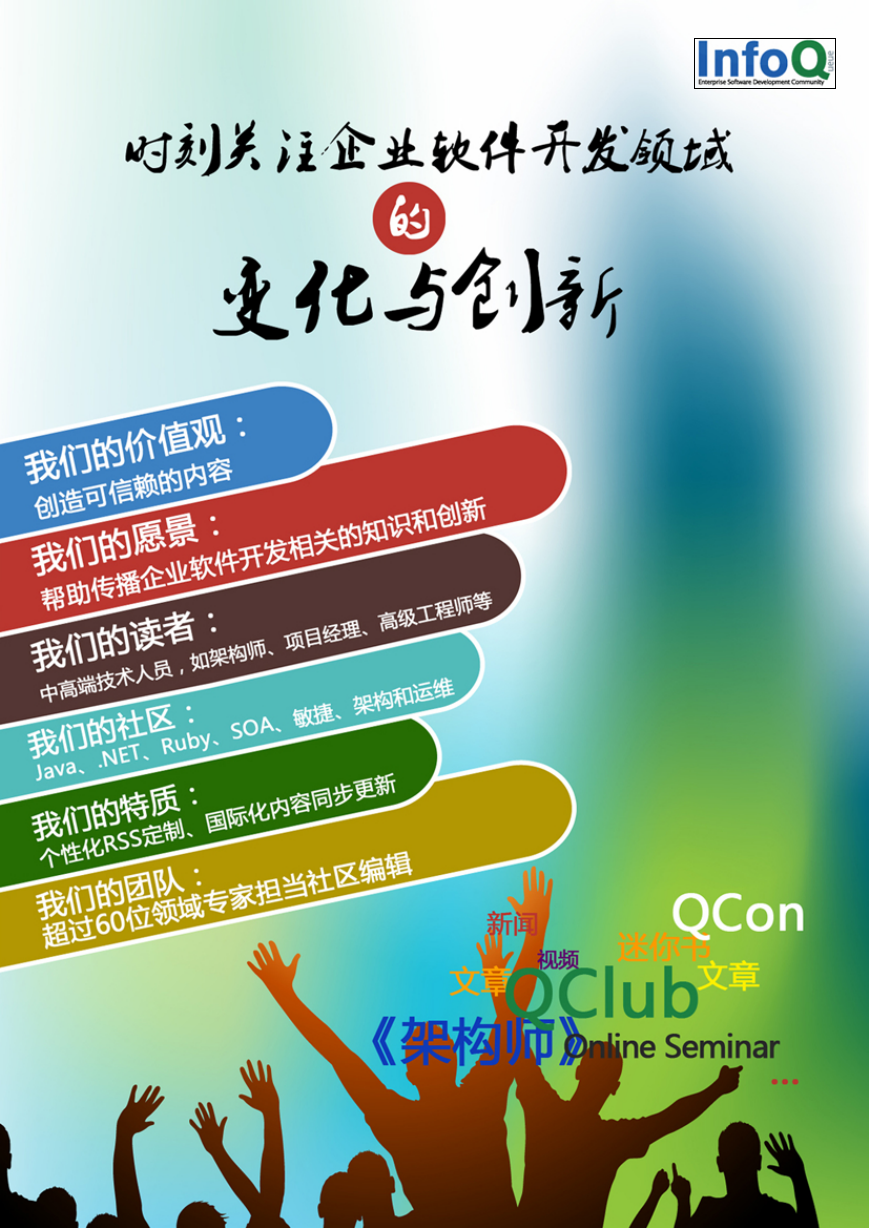
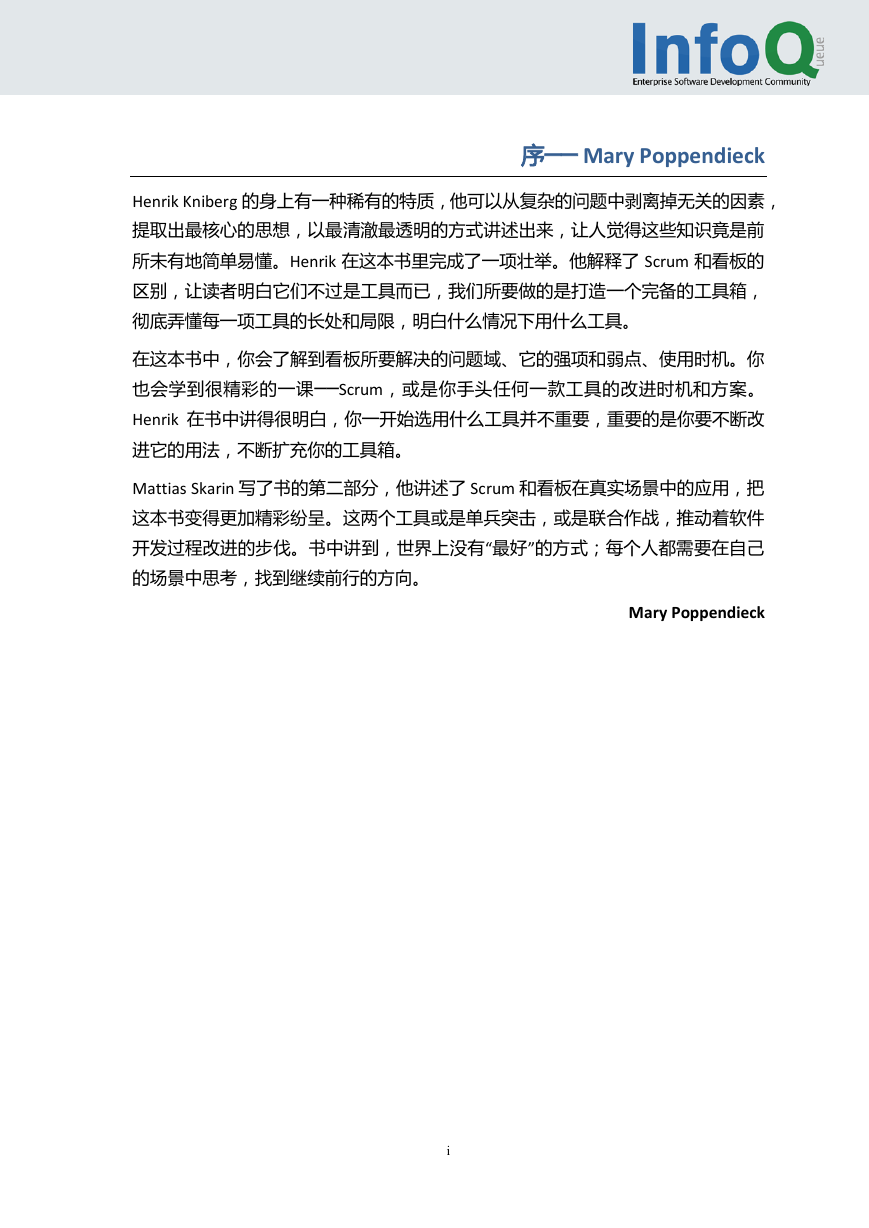








 2023年江西萍乡中考道德与法治真题及答案.doc
2023年江西萍乡中考道德与法治真题及答案.doc 2012年重庆南川中考生物真题及答案.doc
2012年重庆南川中考生物真题及答案.doc 2013年江西师范大学地理学综合及文艺理论基础考研真题.doc
2013年江西师范大学地理学综合及文艺理论基础考研真题.doc 2020年四川甘孜小升初语文真题及答案I卷.doc
2020年四川甘孜小升初语文真题及答案I卷.doc 2020年注册岩土工程师专业基础考试真题及答案.doc
2020年注册岩土工程师专业基础考试真题及答案.doc 2023-2024学年福建省厦门市九年级上学期数学月考试题及答案.doc
2023-2024学年福建省厦门市九年级上学期数学月考试题及答案.doc 2021-2022学年辽宁省沈阳市大东区九年级上学期语文期末试题及答案.doc
2021-2022学年辽宁省沈阳市大东区九年级上学期语文期末试题及答案.doc 2022-2023学年北京东城区初三第一学期物理期末试卷及答案.doc
2022-2023学年北京东城区初三第一学期物理期末试卷及答案.doc 2018上半年江西教师资格初中地理学科知识与教学能力真题及答案.doc
2018上半年江西教师资格初中地理学科知识与教学能力真题及答案.doc 2012年河北国家公务员申论考试真题及答案-省级.doc
2012年河北国家公务员申论考试真题及答案-省级.doc 2020-2021学年江苏省扬州市江都区邵樊片九年级上学期数学第一次质量检测试题及答案.doc
2020-2021学年江苏省扬州市江都区邵樊片九年级上学期数学第一次质量检测试题及答案.doc 2022下半年黑龙江教师资格证中学综合素质真题及答案.doc
2022下半年黑龙江教师资格证中学综合素质真题及答案.doc